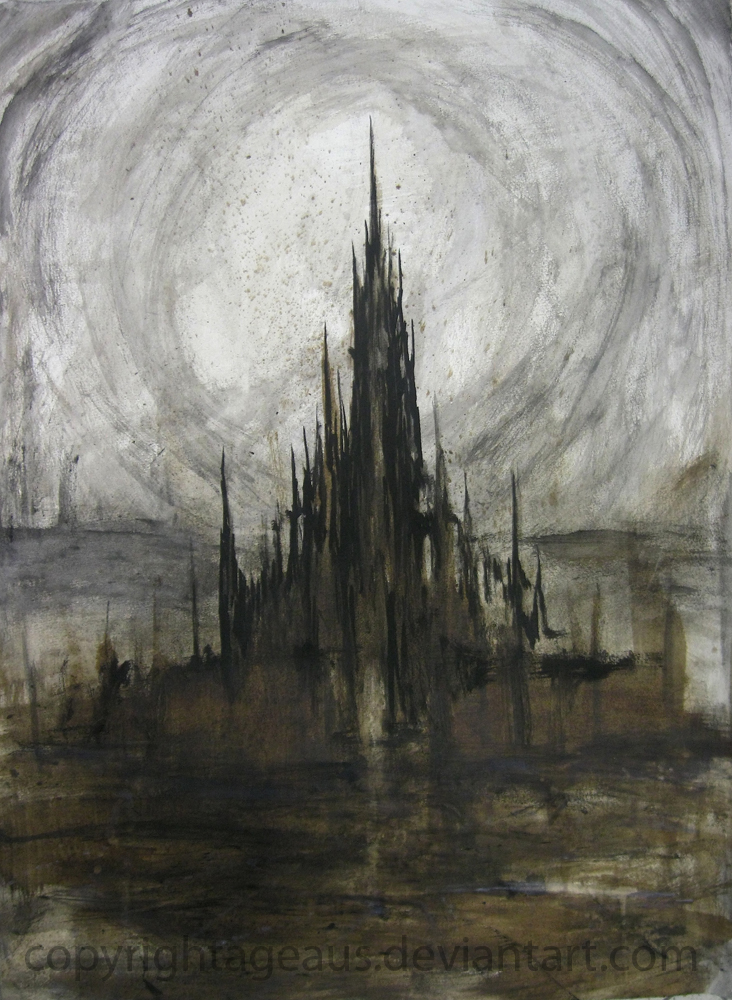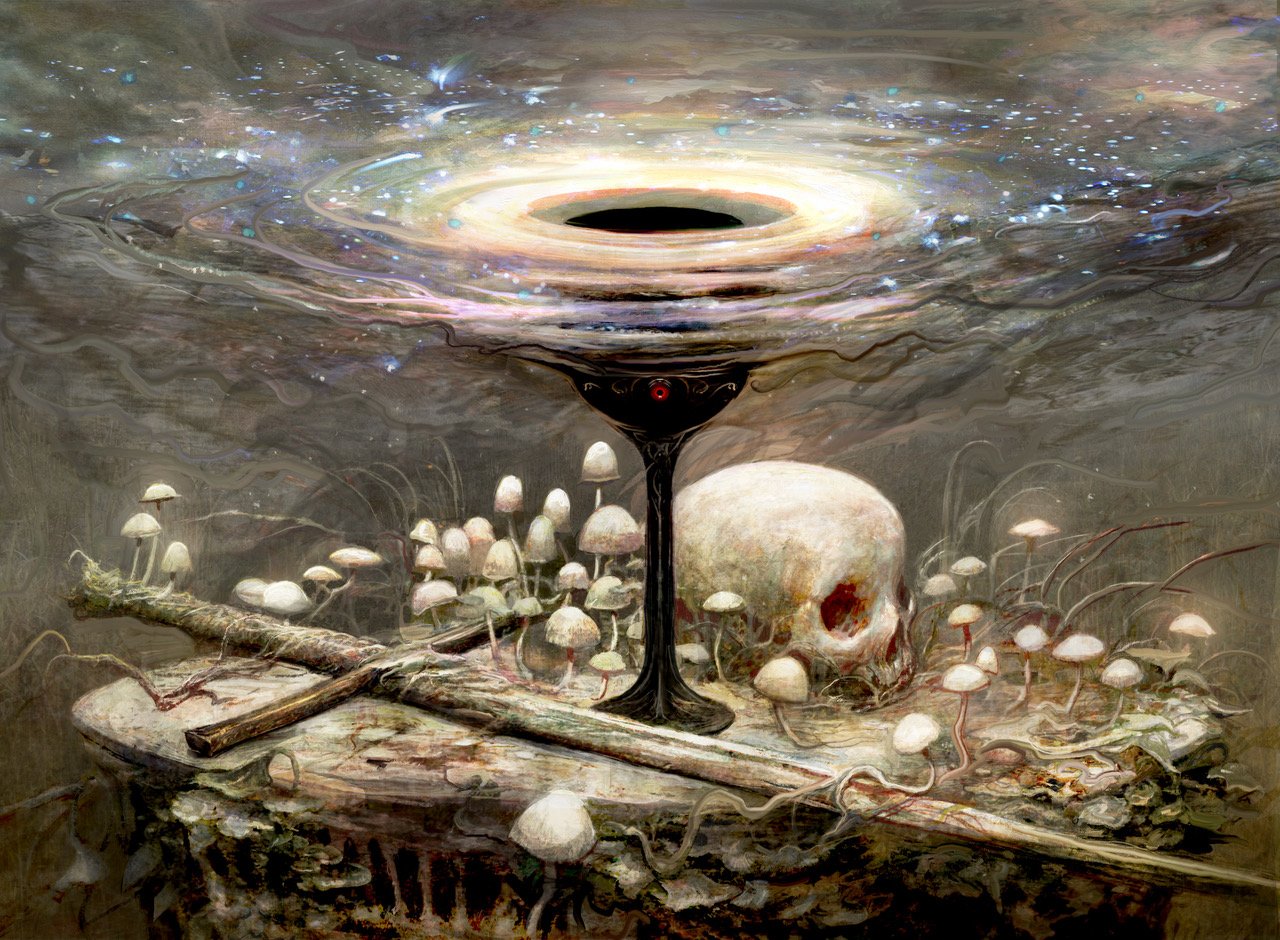Lakshman Anil Paschim had a problem... he was too popular. Born into a family which had gained its wealth during the Green Conquest—wherein precursors to the new faith sought recourse for THEE's intrusion, and were promptly crushed—Paschim inherited a taste for affluence. Enrolled in the greatest schools, spoilt by the finest of delicacies, the young boy grew quickly into the shape of a well-spoken & influential aristocrat.
He was also a brat. How could he not be, as an entitled profiteer?
But there was one line that Paschim could never cross. For all his outbursts and shows of force, for all of the wealth he possessed and attention he craved, Paschim always refused to outright cheek the church. Heresy was a grave sin, after all, punishable in all ways socially and by rule of law. That which was shared, preached, and made were all protected under divine reasoning: that works of THEE's church were in celebration of the Authority's laws. For all his insolence, Lakshman would never dare commit apostasy against his nation's living God... until he did.
Now they are accursed things. Profane artifacts; mockeries born of a sinful mind.
Here are three. Learn their names, understand their histories, so that you may begin to understand why it is that Paschim was never buried within his own catacombs.
Aspis — The Ship
Names: Kolona, The (Stealing) Ship, She Who Glistens
Who Made You?: A crew of 600 laborers.
Wicked Sins: Blasphemy, Piracy, Unsanctioned Geometry
 | ||
| There Are Things Besides Will O' Wisps In The Dark. "Night Fog" by Johnson Cameraface |
Inhabitants of the Aspis:
- 1d6 Workers (Maintenance; slacking off; licking their wounds.)
- 1d4+1 Raiders (Preparing for a raid; hunting intruders; sleeping.)
- 1d4-1 Mesquitan Janissaries (In pursuit of the ship, now trapped within it. Camping; carousing; hunting crew.)
- 3d4 Giant Rats (They have little trouble maneuvering throughout the walls of the Aspis. Breeding; feeding; praying.)
Members of the original crew still endure within the Aspis, along with an assortment of welcome or unwanted guests.
Decks of the Aspis:
- The Hold — near-darkness in torchlight; the sound of creaking wood and snapping oars; a persistent sense of seasickness, pierced by whispers in the dark.
- The Hoard — chests upon chests of treasure, stolen goods from coastal lands; poor to maintain & hardly traversable; a logistical nightmare. How do we get out of here?
- The Bar — a cozy lounge, stocked with food and wine; a moment of respite; music plays softly from a slit in the walls; the bar is manned by a greying beard who takes no requests, offering drink and a kindly smile.
- The Barracks — chisels and hammers, quivers and bows; a collection of arms made, inherited, and pillaged; an unlikely menagerie.
- The Museum — a gallery exhibit; artwork lines the walls, glass cases atop pillars on display; there is a black stain where a portrait should be, its plaque reads "A Girl Found".
- The Muse — a false deck; forever dusk upon the world, a sky bereft of stars.
Paschim's Cup — The Chalice
Names: Chalice of the Covetous, Sorrow, The Great Dissapointment
Who Made You?: a goldsmith's apprentice, imprisoned in a workshop
Wicked Sins: Kidnapping, Obliteration
-----
Lakshman Anil Paschim was not an artist, but he was incredibly envious. More than flaunting his family's wealth, Anil Paschim surrounded himself with artists and their work because they possessed something he lacked—whether mechanical skill or a sense of imagination. Unwilling to pursue an artist's education, Paschim still craved an object for himself...
...And so he studied. Again and again, until the works in his collection had been observed a thousand times. He glared at their construction—sculpture and vessel alike—and tried to ascertain how they came to be. He looked to their sources, sought out their parts, working day and night to reverse-engineer what made them such fine art. When the time came for Paschim to create his first work, the final product was predictably shoddy. Frustration welled inside of him. Following another attempt, then two more, Paschim abandoned his efforts for a far simpler plan.
The Chalice is a receptacle of infinite volume. It cannot be filled nor stuffed with solids, rebelling against its master at every opportunity. Whatever is forced into the chalice bleeds through the bottom, in some cases literally, as compressed material will be transmuted into blood. Submerging the Chalice results in the slow drainage of that fluid, should something prevent it from resurfacing.
Lakshman Anil Paschim would abandon the Chalice in his lifetime.
Location of the Cup:
- At the bottom of an evidence locker in the same town that it was found. Who would want this hunk of junk?
- Currently in the possession of gentle-brigand Sabir Al-Fahd, a hallwani extortionist.
- Being worshiped by a cult of blaspheming Druids. They are using its transformative properties to aid in ritual sacrifice.
- Trapped beneath the decks of the Aspis—buried in treasure or on display.
- Stuck in a chest at the bottom of a lake, inside of a now-waterlogged ship. The chest has begun to leak.
- Jammed inside the throat of a Were-Tiger, fighting to survive in its animal form. The Chalice's trickle keeps them alive—so long as they remain shapeshifted, it won't expand their throat and kill them.
Cups Don't Hold Much Religious Symbolism In Séraphine. Typical, Silly Paschim.
"Chalice of the Void" by Seb McKinnon
Hel's Spear — The Spire
Names: The Dominant, Death's Head, Cock of Hades
Who Made You?: Nobody; you sprung from the earth.
Wicked Sins: Blasphemy, Intrusion
-----
Among certain sects, there is a belief that when the end-times come, every facet of the empire will be utilized in Authority's battle against the forces of evil, including the very cities themselves. Consequently, spires have become a prominent architectural feature, with fleches of silver or gold becoming a common sight across the empire. Spires can be found atop institutions and places of worship, or adorning the walls of fortresses in evenly-spaced clusters. They are, in essence, weapons: tools built to-scale with THEE's might, carved out and occupied for our own convenience.
Lakshman Anil Paschim saw spires everywhere, for his birth had granted him the luxury of witnessing their many forms. He knew well what their presence represented, and as such, his halls were appropriately decorated—donations strategically applied. Yet Paschim cared little for this particular dogma. These payments were expected of him, a formality rather than a commitment, for what other purpose could they serve?
"Say war did come to the Seraphi: would sulṭah truly trash its own kingdom in order to defend us? If so, then would we fill the spires with our institutions? Are we ignorant, or merely stupid?"
This opinion was not unique to Paschim, nor did it matter. When 200 meters of silt and blackstone burst from the bottom of a once-innocuous lake, threatening to pierce the heavens, all eyes fell on the only man who could be deemed responsible. While other heresies merely threatened his reputation, The Spire revealed to old Paschim threats to his life—threats which were very, very real.
Who cares if he had anything to do with it?
 | |||
| It Is Surprisingly Hard To Find Artwork Of Black Spires Sprouting From Water. "Archaic Sanctum" by Ageus |
Features of the Spire:
- Creatures of all sorts have ventured into the region surrounding the Spire, making it their home—this includes Devils, heretics, and a multitude of monsters.
- There are entrances into the Spire, although reaching them has proven somewhat difficult, due to being so far above the surface. Hope you brought your climbing gear.
- The landscape becomes prickly as one travels closer to the base of the Spire, a mixture of upturned crust and blackstone spikes. Likewise, its surface softens during the ascent, smoothing to a point at its apex.
- Being a relatively new landmark, the empire has poured considerable resources into its investigation of the Spire and its birthplace. Pathfinders work alongside clerics in their search for an origin.
- There is a second building rising from the lake, a lopsided tower of halls and columns which has already partially engulfed the Spire.
- Smewhere within the Spire is a second entrance connecting to a smaller, inner core.
 |
| Imagine This, But Stretched Out & Surrounding The Spire. Quinta da Regaleira from Wikimedia Commons |
